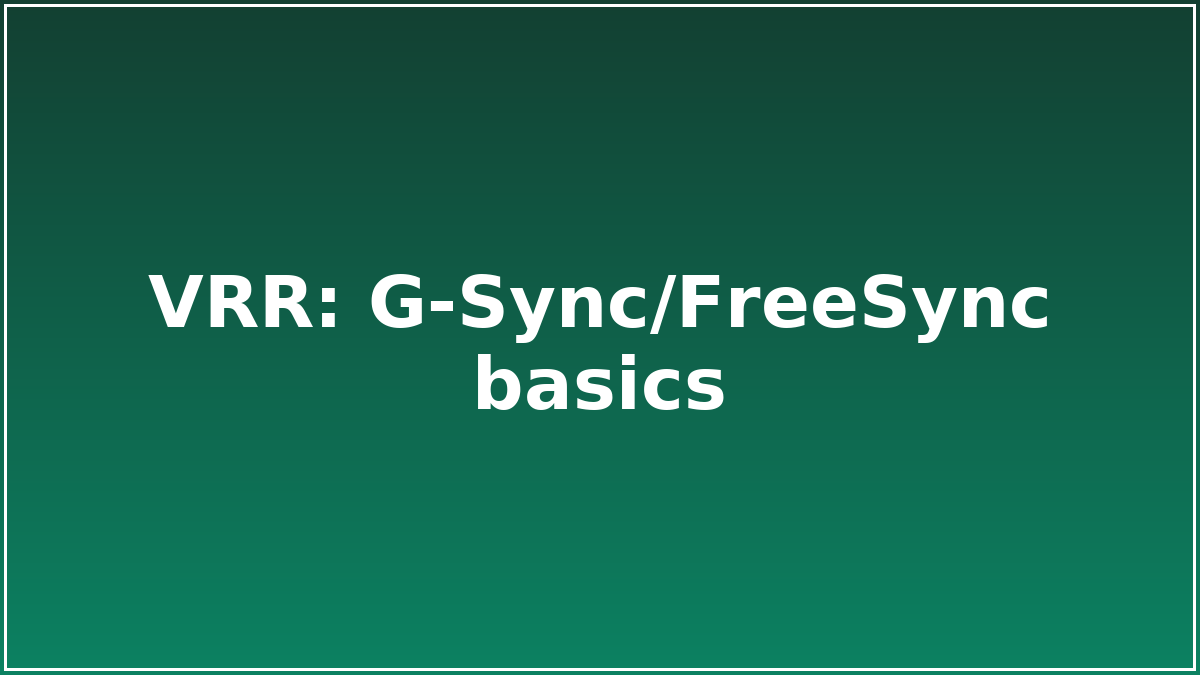VRR: G‑Sync/FreeSync basics

Tear‑free play explained simply.
Variable Refresh Rate (VRR) synchronizes the monitor refresh with your frame‑rate to eliminate tearing.
Steps
- Enable VRR in OS and on the display (G‑Sync Compatible/FreeSync).
- Use a frame cap 2–3 fps below max refresh to avoid hitting V‑Sync.
- Disable in‑game triple buffering; keep V‑Sync off with VRR unless a title specifically requires it.
- Verify with a UFO test and in‑game frame‑time graph.
Checklist
- Use a certified cable (HDMI 2.1/DP 1.4)
- Turn off any post‑processing blur on the TV
Troubleshooting
- If VRR flickers at low fps, raise cap or use Low Framerate Compensation (LFC)
FAQ
Will this void my warranty?
No; follow the vendor’s documented limits and procedures.
How do I measure success?
Use a repeatable 5‑minute test and track frame‑time or load times before/after.
Advanced tips
- Work in a repeatable test scene; change one variable at a time.
- Use frame‑time graphs over average FPS to spot micro‑stutter.
- Save per‑game profiles so updates don’t overwrite your settings.
Common mistakes
- Stacking multiple sharpening passes (can cause shimmer).
- Using unlimited FPS on VRR displays (can raise latency and temps).
- Enabling conflicting options at OS and in‑game level.
Cheatsheet
VRR: G‑Sync/FreeSync basics — quick wins you can try first:
- Lower volumetrics and shadows before textures.
- Cap FPS 2–3 below refresh for smoother frame‑time.
- Prefer in‑engine upscalers over driver‑level scaling.
Source
Primary documentation and testing relevant to "VRR: G‑Sync/FreeSync basics".